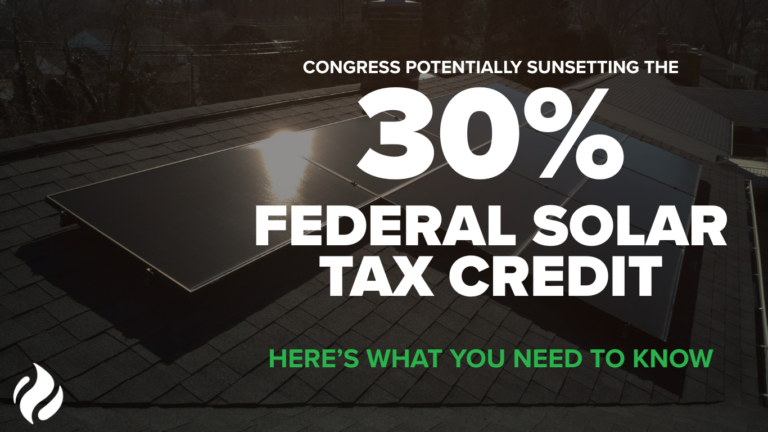The world of modern green energy technology continues to rapidly advance and become more complex with every added feat of progression. Keeping up with our technological advancements increasingly requires specialized knowledge to properly understand. For those not specifically educated in the field of solar panel electronics, gaining insight into your solar system’s basic inner workings benefits you as a consumer. There are endless amounts of potential solar configurations but how can you decide which arrangement you would like if you are not aware of what they consist of and how they operate? At Lumina Solar, we firmly believe that educating and informing our customers is the best way to properly facilitate and plan a solar system installation. Today, our solar representatives have compiled a list of important solar terms that you should be aware of to develop a well-rounded understanding of how your solar panel system operates and in turn, be able to communicate using the solar lingo.
Full Alphabetical List of Solar Terms
Alternating Current (AC)
A flow of electricity that changes directions periodically. Primary choice when it comes to transmitting electric currents over long distances as well as the type of current that powers your home.
Balance of System
Includes all costs of components besides the photovoltaic array such as design costs, indirect storage, site preparation, maintenance, installation, and operation costs.
Direct Current (DC)
Unidirectional flow of electric charge that continuously flows in a single direction. Solar cells typically operate on DC power which is then converted to AC with an inverter.
Diode
A device that permits electrical flow in a single direction only.
Electric Bill
A bill that is issued monthly to a homeowner for the amount of electricity they used from the local utility grid.
Electric Current
A measurement that refers to the quantity of a charge passing through a wire.
Electric Grid
A connected network of electrical currents and storage that delivers electricity from the producer to the consumers. Normally operated by the local utility company.
Energy Storage
Any type of technological device where electricity can be stored such as a battery.
Federal Investment Tax Credit (ITC)
A federal tax credit that can be claimed against the taxes that are paid by solar investors. This applies to residential, commercial, and utility with specifics for each category.
Fixed Tilt Array
A photovoltaic array that is arranged at a horizontal, fixed angle.
Flat Plate Array
A photovoltaic that does not concentrate at any specific angle and instead, is mounted on a flat surface.
Gigawatt
A measurement of electrical power that is equal to one billion watts.
Greenhouse Gases
Gas that absorbs and emits radiant energy within the thermal infrared range. The big four greenhouse gasses are carbon dioxide, methane, nitrous oxide, and fluorinated gases.
Hybrid System
When power is drawn from more than one source of renewable energy and used in a single destination.
Incentives
Offered by local, state, and federal governments, solar incentives are offered by way of tax cuts and energy savings and are meant to motivate homeowners to switch to renewable solar energy.
Joule
A measurement of energy that is equal to one watt of power radiated for one second.
Kilowatt (kW)
A unit of energy measurement that is equal to one thousand watts.
Kilowatt-hour (kWh)
A unit of energy equal to one kilowatt that is sustained for one hour.
Local Utility
A public or private company that covers a specific area and provides electricity or other energy commodities.
Low Voltage Cutoff
The process of cutting off the battery before its discharge is complete to achieve maximum capacity and battery efficiency.
Megawatt (MW)
A unit of energy measurement that is equal to one million watts or one thousand kilowatts.
Microinverter
A device commonly used in solar systems that converts DC to AC.
National Electric Code (NEC)
A standard that can be implemented by region for the safe installation of electrical equipment and wiring in the United States. Mainly used to prevent fires caused by electrical malfunctions.
Net Metering
The process used to receive kilowatt-hour credits on your monthly energy bill when your solar system generates more electricity than you used for that month.
On-Grid
When your home’s electricity is connected to the local utility company’s power grid.
Off-Grid
When your home is not connected to a utility company and all of your electricity comes from sources other than the grid.
Peak Sun
The specific hour in the day when the sunlight intensity reaches an average of 1000 watts/meter squared.
Photovoltaic
The process of converting sunlight into electricity. The photovoltaic effect is essentially how solar panels can work.
Power Purchase Agreement (PPA)
A financial agreement is where a developer installs a solar panel system on your home that is paid for by the developer who then owns, operates, and maintains the solar panels. The power generated is sold to the homeowner at a fixed rate that is generally lower than the cost of electricity from the grid.
Regulator
Also known as a solar charge controller, a regulator keeps your solar system’s batteries from overcharging.
Service Transfer
When someone else occupies a home with a solar system installed a service transfer allows the new occupant to switch the service agreement into their name and ownership.
Smart Grid
An automated electrical grid that monitors and regulates electrical flows from generation to consumption. Smart grids control the flow of power to manage the electrical load.
Solar Array
A solar array is the entire power generating unit that consists of all of the panels configured into an array to maximize exposure to sunlight.
Solar System
A solar system consists of the solar panels and all of the other components needed to utilize the energy generated by the panels, in the home. Sometimes solar systems can also include batteries for storage.
Volt
The standard unit of electromotive force in the International System of Units (SI) is defined as the difference of electric potential between two points of a conductor, constantly carrying a current of one ampere.
Watt
The International System of Units standard for measuring energy per unit of time or power.
Get Started on Your Solar Journey Today
Making the switch to clean and renewable solar energy is one that brings many advantages to both the homeowner and the world as a whole. From monthly energy bill savings to a reduced carbon footprint, converting to solar is a no-brainer. At Lumina Solar, we connect you with one of our professional solar representatives who will work closely with you to determine which solar system fits your specific energy needs. Contact us today to get started!




